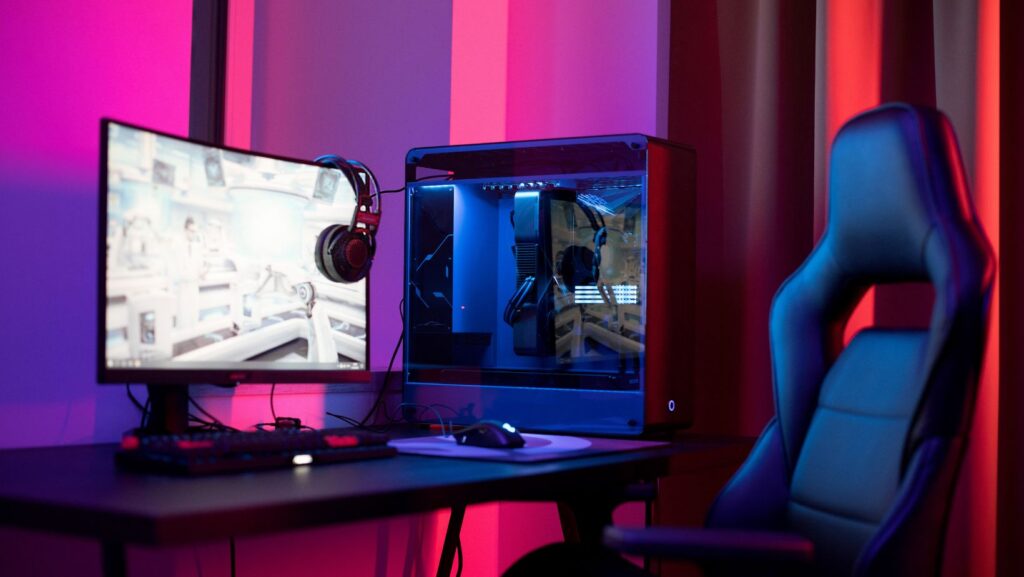
Gaming isn’t just about the games you play; it’s also about the environment you play them in. Whether you’re a dedicated PC gamer, a console enthusiast, or someone who enjoys the occasional session with friends, setting up a space that suits your needs makes a real difference.
Selecting The Ideal Space
The first step is choosing a space that fits your gaming needs. A spare room is ideal, but even a section of a bedroom or living room can work if arranged properly. Consider the size of your setup – multiple monitors, a gaming chair, and a desk require more space than a simple console and TV.
If possible, pick a space with good ventilation – long gaming sessions generate heat, and proper airflow prevents your equipment from overheating. Proximity to power outlets and your internet router is also important. A wired connection is more stable than WiFi, so setting up near your router can reduce lag and any possible connection issues.
Choosing The Right Furniture
Avoid furniture that looks good but lacks practicality. A sleek, minimalist desk might seem appealing, but if it doesn’t have enough space for your monitor, keyboard, and other accessories, it will only create frustration.
Storage is another factor to consider. A setup with shelves or drawers makes it easier to keep your space organised and free of clutter. If you use a console, a media unit with built-in ventilation ensures your system stays cool while keeping cables and accessories neatly stored.
Setting Up Essential Hardware
A mechanical keyboard and a precision gaming mouse can give you an edge in fast-paced games, while a controller with customisable buttons suits a broader range of titles. Good audio is just as important as visuals. A quality headset or surround sound speakers enhance immersion, helping you pinpoint enemy movements or experience in-game soundtracks as intended.
If you play online, a microphone with noise cancellation makes communication clearer, reducing background noise for your teammates.
Enhancing The Ambience With Lighting
Lighting affects both mood and functionality. Bright overhead lights can cause glare, while dim lighting strains your eyes.
A layered approach works best – combine ambient lighting with task lighting to achieve balance. LED strips behind your monitor reduce eye strain and add a stylish glow, while smart bulbs let you adjust colours to match the mood of your game.
Organising And Personalising Your Space
A tidy gaming area improves both comfort and performance. Loose cables are a hazard and make your setup look messy. Use cable management solutions like Velcro ties, cable trays, or adhesive clips to keep them out of sight. Wireless peripherals reduce clutter, but if you prefer wired connections, arranging cables neatly ensures easy access when needed.
Personalising your space makes it feel like your own. Posters, figurines, or themed accessories create a setup that reflects your gaming interests. To add a touch of nostalgia, consider incorporating classic games like bingo into your gaming space, through classic themed décor or even occasional casual play sessions with friends.
Whether you prefer a high-tech battle station or a cosy console nook, the key is finding a balance between function and style.





